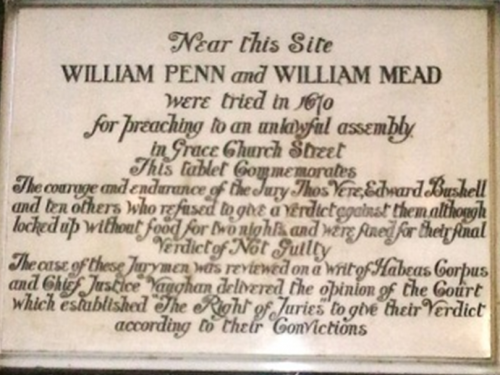Lauderdale House was once a country retreat for a well-known Quaker. In 1677 wealthy linen merchant William Mead bought the House as a second home. Seven years earlier, he appeared in court, a defendant in a sensational human rights trial.
At the time, the King viewed anyone who didn’t follow the Anglican church as a threat. If six or more people gathered together to worship another religion they risked ending up in jail.
When William attended a crowded Quaker meeting in the City of London he was charged with disturbing the peace. Although the jury found William innocent, the judge disagreed. What happened next led to a new principle of English law.
